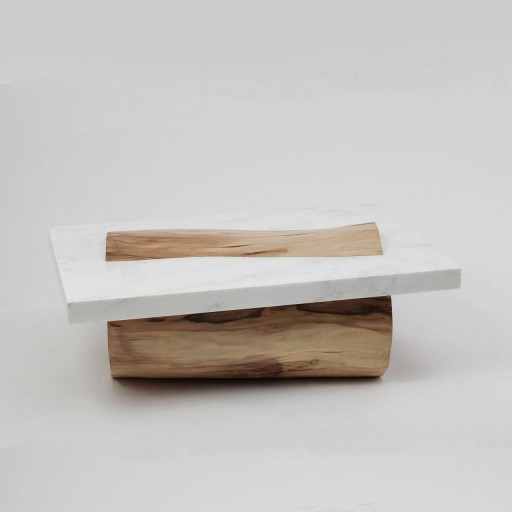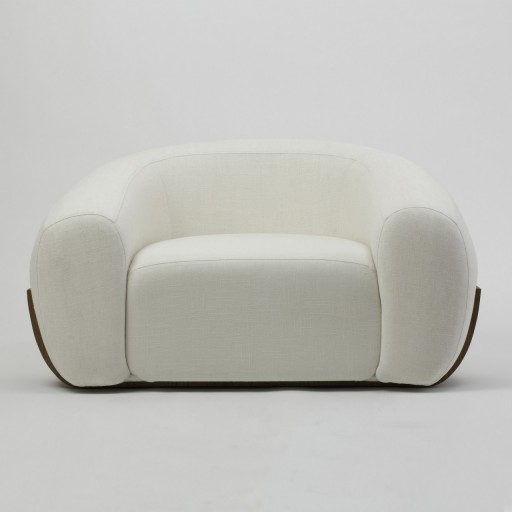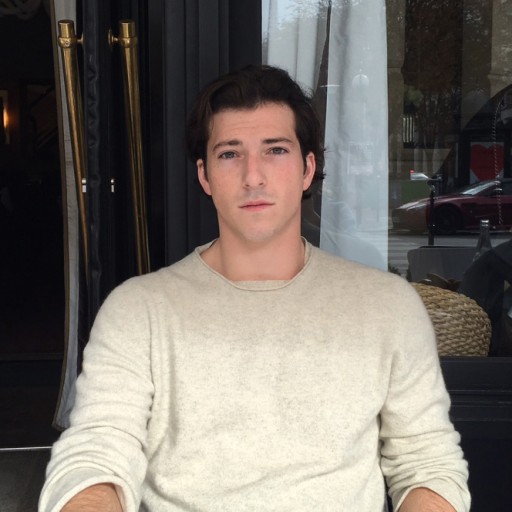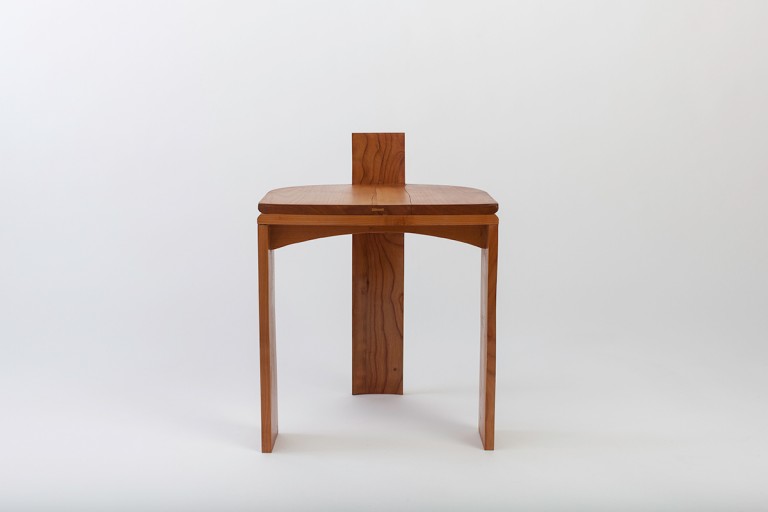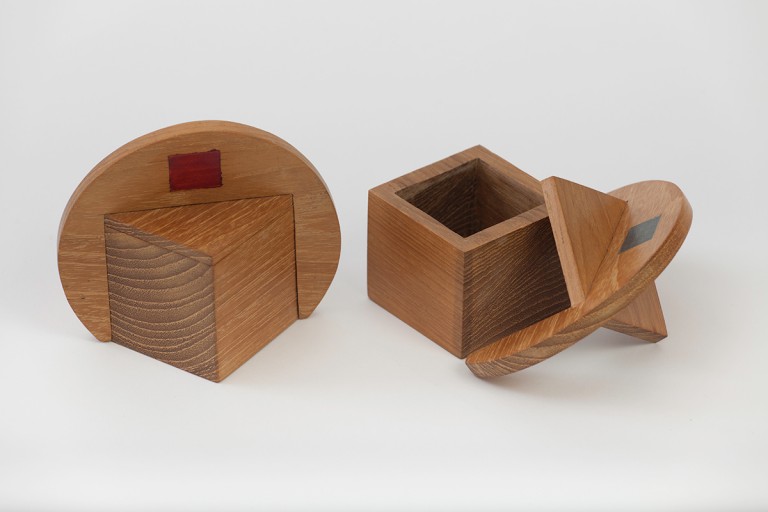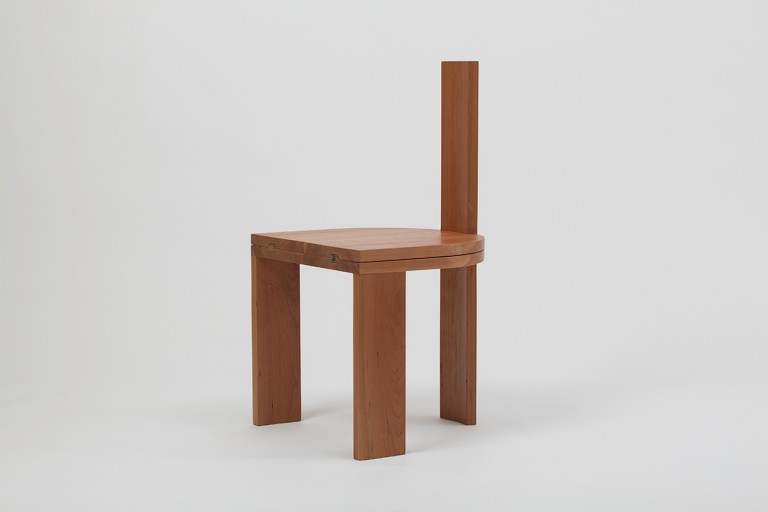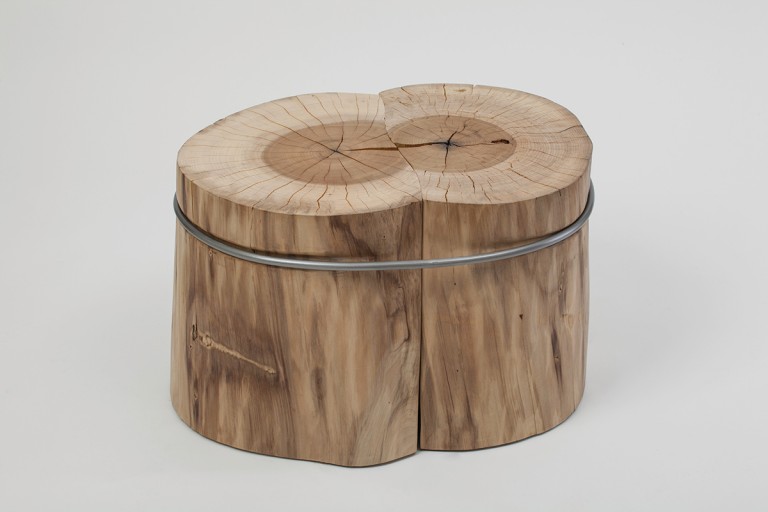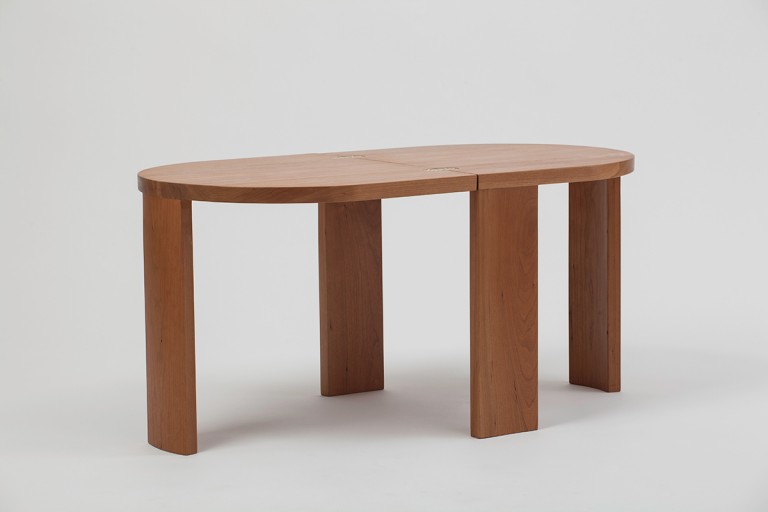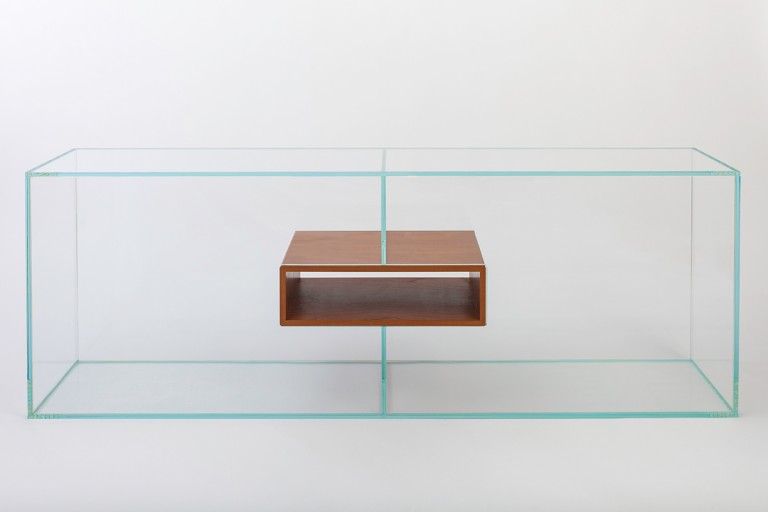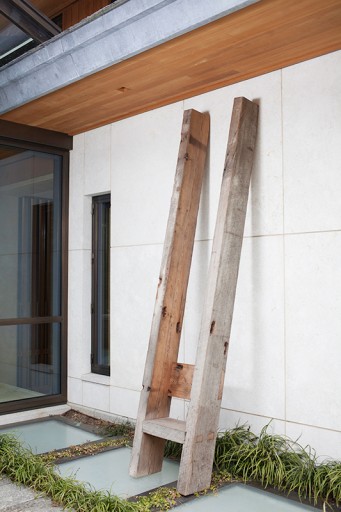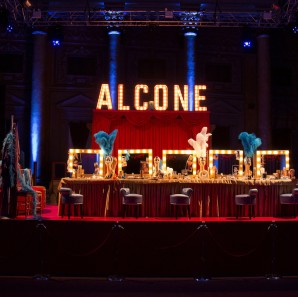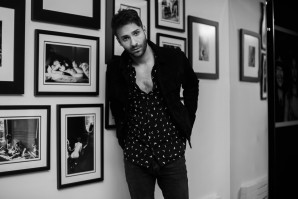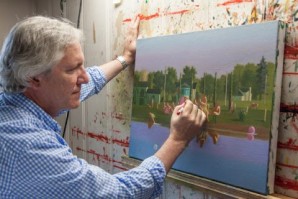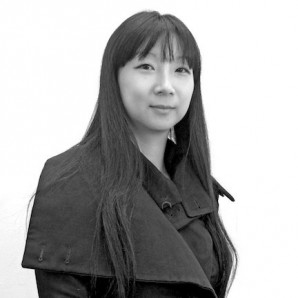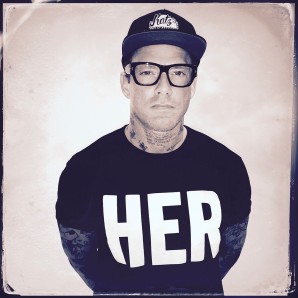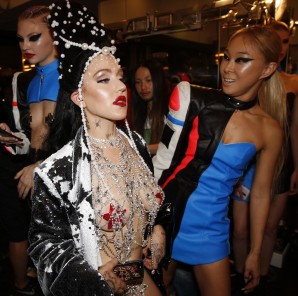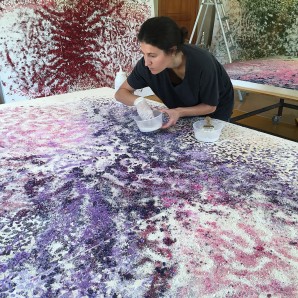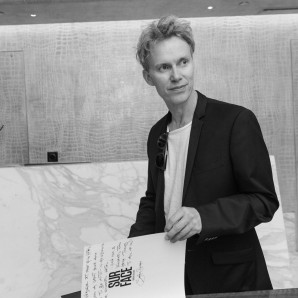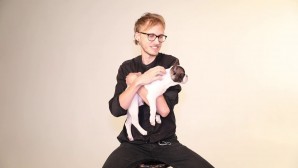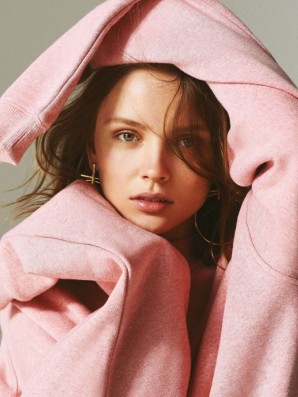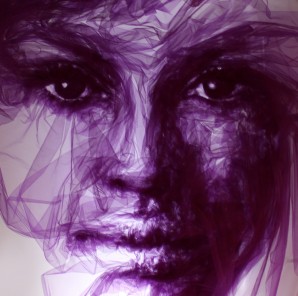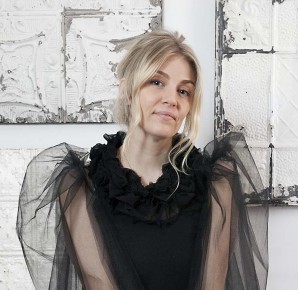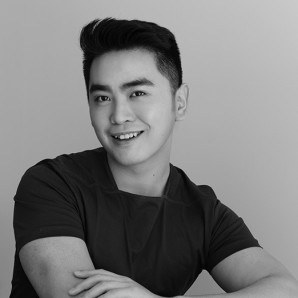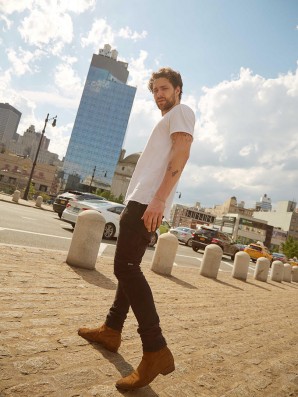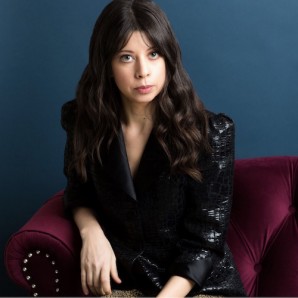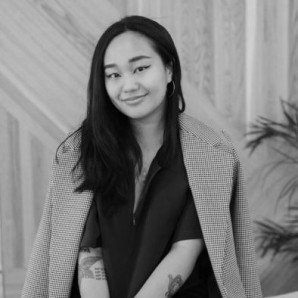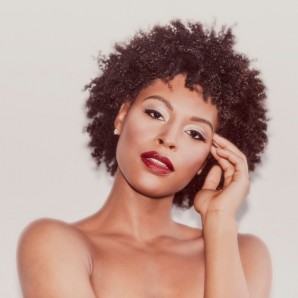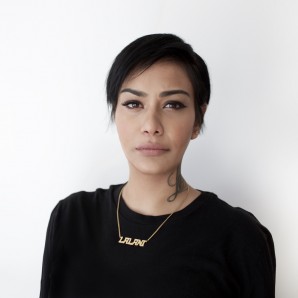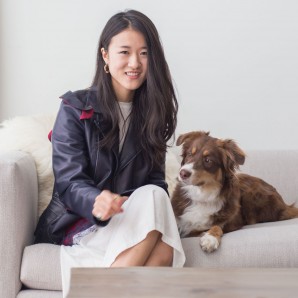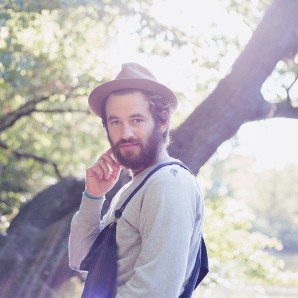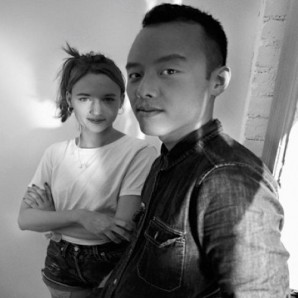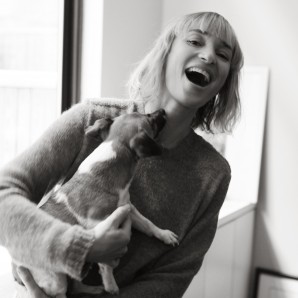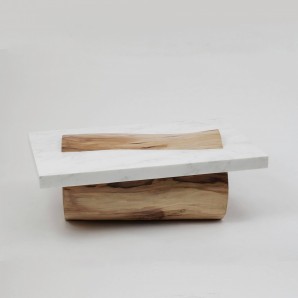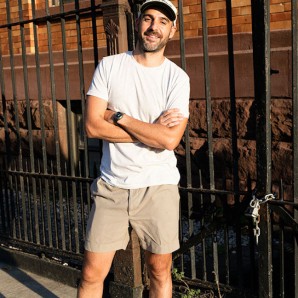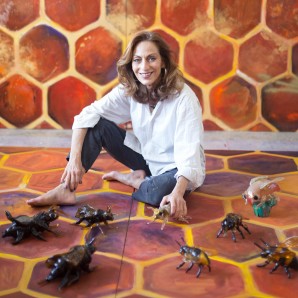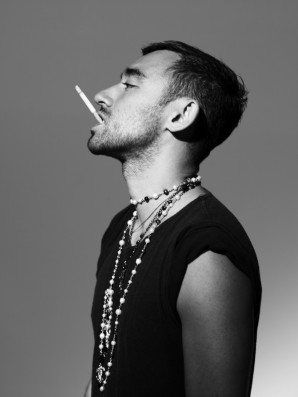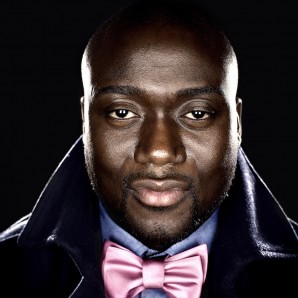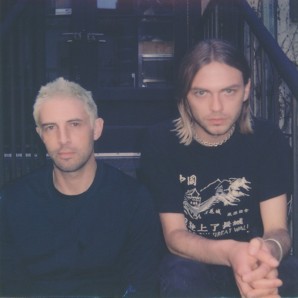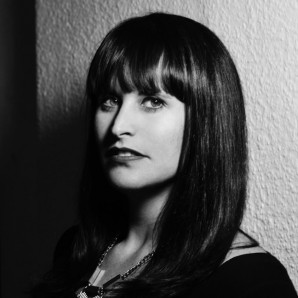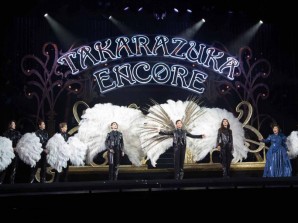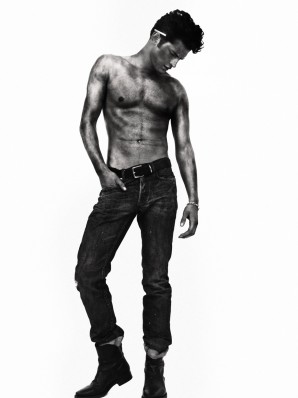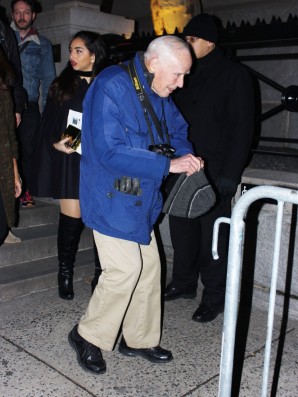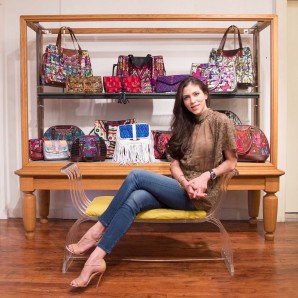No make-up company has a more storied history firmly ensconced in New York showbiz.
MARC ENGLANDER INTERVIEW
Equally as functional as beautiful, the works of Marc Englander, a furniture designer and conceptual artist based in New York City, are simple, innovative, elegant, and distinct. His designs maintain a high level of integrity to the materials from which they are crafted. It is the striking contrast of these materials and textures that builds interest into Englander’s designs. A perfect illustration of such contrast is seen in his “coffee table No.3,” a stunning piece built from the unusual combination of sycamore wood and alabaster. The warm, rustic nature of the sycamore wood is perfectly complemented by the smooth surface and flowing patterns of the alabaster. While many of his works are great conversation starters, all of Englander’s designs are as much practical furniture as they are sculptural works of art.
In this exclusive interview, it is TWELV magazine’s pleasure to provide a closer look into the career, the designs, and the inspiration of Mark Englander.
------- Marc Englander Interview -------
1. How did you first get involved in designing furniture?
I got involved out of necessity. Well, “necessity” might be a strong word. A seven years old console was falling apart and some other things in my room were changing, so I “needed” a new console. I drew something up, a horrible sketch. But the idea was pretty good. My parents were kind enough to help me get in touch with the right person to actually produce it. It was a really fun process.
2. What was your path to becoming a furniture designer?
My friends in college were much cooler than me and all had their talent, whether it be photography, painting, or playwriting… I tried to draw but I only had ideas for furniture objects. After saving up some money, I started producing a piece or two a year as a hobby to get some space from my day job in finance.
3. We learned that you have a great passion for Japanese aesthetic. Can you tell us more about how you fell in love with it and how it influences your designs?
I was lucky enough to go to Japan when I was 5 years old. I think samurai swords caught my attention first. It’s hard to say, but I think the Japanese minimalism still retains a certain warmth to it. The uncut edges or the screw-less joints in the wood-working maintains a balance with nature that is pretty poetic.
4. Could you talk about the decision to use wood as the primary material for your designs?
Partly for economic reasons, it is a little cheaper than other materials, and durable. The grain patterns and color, I find beautiful. And conceptually, because I wanted to make unique objects out of a common material.
5. Could you talk more about where the wood comes from and what types of wood you use?
Most of the wood I have used has been organically harvested. The carpenter, who is much more skilled and experienced, and I collaborate to try and find the most holistic solutions available for each piece.
6. What is the most memorable piece of furniture you have ever seen?
I’m not sure if it has a name but there is a picture of Constantin Brancusi, a famous sculpture, sitting in this massive carved tree stump. I think it’s one of the strongest images. It might also be because Brancusi is in the photograph and I am huge fan of his work.
7. We think the coffee table No.3 thats made of sycamore wood and alabaster is a wonderful piece that balances aesthetic and functionality at the same time. Could you elaborate more on your design process on making this piece?
Thank you! I really appreciate that. I happened to see a bar at this restaurant in New York called I SODI that was made with wood shelves and white carrara marble. I thought that material combination and color combination was genius. I started sketching a few ideas with those types of materials in mind. Meanwhile, I also wanted to make something that blocked its own use but that would still be pretty, for lack of a better word. It doesn’t sound like a good joke, but I thought a coffee table that kind of pokes fun at itself by blocking a fair amount of its surface area would be funny. And I like when the eye gets a bit confused as well, so making the sycamore log appear continuous checked all those boxes. And then I chose alabaster because so much work of other great designers was in carrara. I wanted to differentiate myself a bit. It was originally supposed to be frosted alabaster which has a near glass-like appearance but unfortunately, or rather fortunately, that came out glossy. Some mistakes are important.
8. What is the biggest challenge of your work, and what’s the most rewarding?
The biggest challenge is finding creative solutions to engineering and structural problems so as not to sacrifice desired materials or appearance. The most rewarding is seeing something that was once in your head exist in reality. (I hope that doesn’t sound cheesy or cliché.)
9. We noticed that each piece of your designs maintains a high level of integrity to the materials presented. Could you talk more about how do you manage to accomplish that?
I think that it is important for there to be an authentic connection between what the piece looks like it is made out of and what it is actually made out of. I try to avoid using composite materials and veneers to get the forms intended. And if the material I had in mind can’t bend or support itself in the way I drew it, I will work with the producer to either use a different material entirely, change the design, or both. I try not to be married in my head to the result.
10. Have you ever encountered creative blocks? And if so, how do you deal with it?
There are always difficulties and setbacks. I can’t really speak to all in general. They have all been pretty specific so far.
11. Can you give us some good piece of creative advice?
I don’t think I’m very good at giving advice. Maybe ask someone older than me. But my favorite piece of creative advice I ever read was in Letters to a Young Poet by Rainer Marie Rilke. The gist was to go inward and be bold, not to relay too much on collaborating or what other contemporary designers are necessarily doing. It is obviously crucial to know what is going on in your world. It’s a paradox.
12. Anything else you’d like to add about your designs, career, what you like to do in your free time?
Well, I used to design during my free time out of the office. So now, my free time is free. But luckily, I still enjoy designing… so it still feels like free time.
INTERVIEWED BY QIANRAN YUAN
related posts
Alcone 65th Anniversary @Capitale: Interview with CEO Maria Stewart
Ikemen #35: Zaher Saleh
IKEMEN (ē´k´mɛn): Japanese Slang
"REALLY, REALLY, RIDICULOUSLY GOOD LOOKING PEOPLE"
Interview: Neurosurgeon-turned-Artist Keith Kattner on the Surgery of Classical Painting
Dr. Keith Kattner does not have the typical background one would expect of a successful neurosurgeon.
New Type #27: Nika Tang Interview
San Fransisco-based designer Nika Tang has emerged as boldly committed to her ideology as to her pieces. Her namesake brand centers...
Interview: Becky Donnelly's Fashion Creatures
Quirky girl from Dublin with a penchant for drawing fantasy creatures relocates to London after art school.
Kaimin Interview & S/S18 "Slut from the Future" Presentation @ the Top of the Standard
Pulsing with a heavy beat and hazy with a deep rouge glow, the Top of the Standard is as glamorous a place to be as ever. And tonight it is packed with partygoers.
Yasmina Alaoui Interview & Opera Gallery Exhibition
Yasmina Alaoui burst onto the international arts scene in 2003 with "Tales of Beauty," a collection of nude...
Søren Solkær Interview
Stepping out of a cab into the urban symphony of Midtown, the entryway to The Quin Hotel was easy to spot— with classic architecture and...
Kyra Ross of Mona Liza Studios Interview
TWELV sat down with the charismatic Kyra Ross, founder of Mona Liza Studios which falls under his larger moniker "...
Ira Sumbaeva Interview
TWELV sits down with model Ira Sumbaeva to give a glimpse into the story of the cutest Belarusian...
Benjamin Shine Interview: Master of Tulle
Benjamin Shine is an award-winning international artist whose work stretches across industries from fashion...
New Type #25: Mémère – Sarah LeBlanc Interview
Upon arriving to the Mémère studio, it felt like stepping from the bustle of New York City...
IKEMEN #34: GABRIEL LIBERTY
IKEMEN (ē´k´mɛn): Japanese Slang
"REALLY, REALLY, RIDICULOUSLY GOOD LOOKING PEOPLE"
NEW TYPE #23: ANE AMOUR – IYALA ANNE INTERVIEW
“Introducing a talented designer giving sophisticated femininity an edge”
NEW TYPE #22: Allina Liu INTERVIEW
Born and raised in New York City– we could also add, "in love with”– Allina Liu is a refreshing womenswear designer, who questions the...
NEW TYPE #21: Kendall Miles INTERVIEW
“My passion is shoes. Kendall Miles shoes are beautiful, alluring and handcrafted in Italy: the perfect pair for the woman who knows who she is and where she wants to go.”
NEW TYPE #20: Shahista Lalani INTERVIEW
"Introducing an emerging designer creating captivating leather fashions."
NEW TYPE #19: PAMPLEMOUSSE - Danica Zheng Interview
“Introducing a dedicated, innovative designer to awaken every woman’s inner voice.”
NEW TYPE #18: BOOM DONE SHOP - LIAM BERGIN INTERVIEW
“Introducing the new hot British ethical apparel brand BOOM DONE SHOP”
NEW TYPE #17: NAMILA - NAN LI AND EMILIA PFOHL INTERVIEW
NAMILIA was founded in 2015 by Berlin based designers Nan Li and Emilia Pfohl. The duo met while attending University of the Arts Berlin.
Isabel Dupre Interview
Isabel Dupre Interview is now available!
Check inside for the Full Page Interview.
IKEMEN #33: DANIEL VIEDMA
IKEMEN (ē´k´mɛn): Japanese Slang
"REALLY, REALLY, RIDICULOUSLY GOOD LOOKING PEOPLE"
Judi Harvest INTERVIEW
“We’re all bees, we need to dance more and always search for beauty,” Judi Harvest proclaims.
BEHIND THE SCENES #4: Nicola Formichetti
TWELV's Behind the Scenes takes a step back and visits the masterminds behind the camera.
IKEMEN #32: TERRY DOE
IKEMEN (ē´k´mɛn): Japanese Slang
"REALLY, REALLY, RIDICULOUSLY GOOD LOOKING PEOPLE"
Name: TERRY DOE
NEW TYPE #16: LINDER - SAM LINDER AND KIRK MILLAR INTERVIEW
“Introducing a new generation of quick and fresh minded designers”
IKEMEN #31: CORNELIUS LOY
IKEMEN (ē´k´mɛn): Japanese Slang
"REALLY, REALLY, RIDICULOUSLY GOOD LOOKING PEOPLE"
Takarazuka CHICAGO Cast Members Interview
“All Japanese, All Women, All that Jazz! We interviewed three cast members of Takarazuka CHICAGO who preformed in the Lincoln Center Festival in 2016.
Sean O’Pry EXCLUSIVE INTERVIEW "Good Ol’ Georgia Boy”
SEAN O’PRY EXCLUSIVE INTERVIEW
"GOOD OL’ GEORGIA BOY”
R.I.P. Bill Cunningham
Bill Cunningham, Iconic Street Style Photographer, Passes away at 87
NEW TYPE #14: Alida Boer - Alida Boer Interview
TWELV Magazine sat down with Alida Boer in NYC to get to know the designer and better understand the intricacies of her designs and company’s mission.

